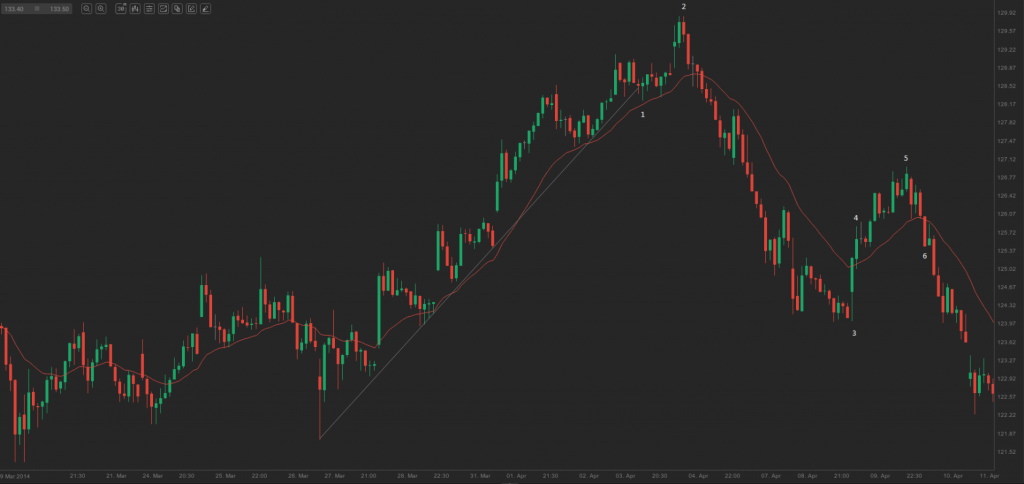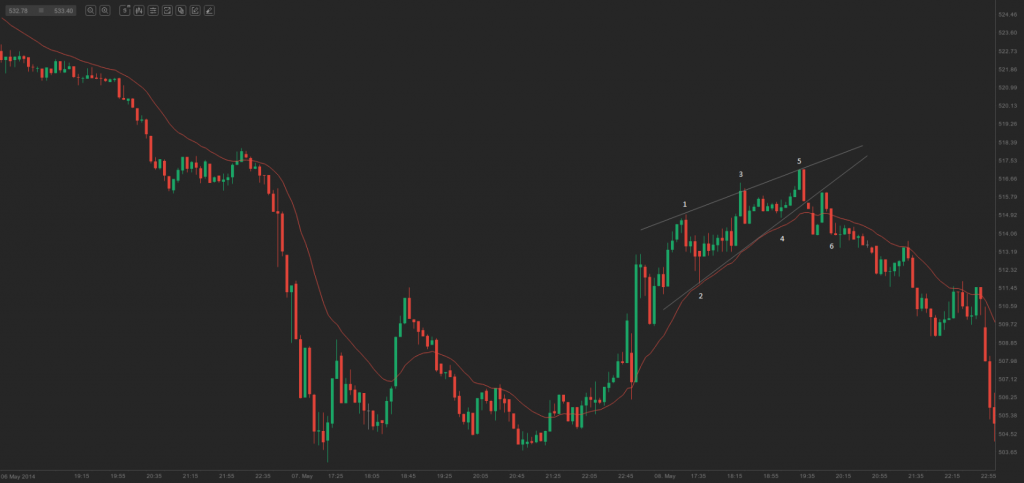Trend channel line overshoots leading to reversals
This lesson will cover the following
- Wedge-shaped patterns
- How can they be traded?
Wedge-shaped patterns
All trends may end with a test of the prior extreme level, while the test itself may be two-legged. Each of the legs may lead to a new extreme (in the case with an uptrend – a higher high, and in the case with a downtrend – a lower low). The initial extreme level and the following two legs form three swing levels, a reversal setup, named differently. This setup often has a wedge shape.
Many of the three-swing-point setups lead to a reversal after they overshoot a trend channel line. This overshoot is the only reason for a trader to enter the market, regardless of the fact that the shape of the pattern may not exactly resemble a wedge. Sometimes the three swing points can be easier to spot than the actual trend channel line overshoot. All these setups come of perfect shape in rare cases and this requires adjustment of trend lines and trend channel lines, if one is to determine the pattern. At times, for instance, a Wedge pattern may be formed by using the bodies of candles and in such a case drawing the trend line and the trend channel line requires a trader to ignore the wicks of candles. In other cases the end point of the Wedge may not reach the trend channel line.
If a Wedge pattern urges a trader to enter the market, but this entry turns out to be a failure (the price moves beyond the Wedge extreme), this movement may be a measured one (almost the same height as that of the Wedge). At times, right after the price exceeds the Wedge extreme, it may reverse back a while in a second attempt to reverse the trend. If a reversal indeed occurs, the new trend may last for at least one hour and may be comprised by at least two legs.
It is possible that the third swing point may undershoot the second one, thus, forming a double top pattern. Yet, it trades the same way – as a reversal. If the third swing point considerably undershoots the second one, then a Head and Shoulders formation is formed.
How to position yourself
In terms of trading, bears may enter on a stop order at one cent below the failed breakout bar (close to the upper area of the range). Bulls may enter on a stop order at one cent above the failed breakout bar (close to the lower area of the range). A trader should keep in mind that a breakout beyond any swing high or swing low (even if it belongs to an earlier and opposite trend) implies strength and provides a potential trading opportunity.
On the 30-minute chart of BA above the move down to bar 3 breached a key bull trend line, which was also far below the exponential moving average. After that an up move with three swing points led to a lower high at bar 5. Bar 4 was a M2B setup, while bar 6 was a M2S setup, after which the second leg of the downtrend continued.
On the 5-minute chart of GOOG above bars 1,3 and 5 formed a bullish wedge, while bar 3 overshot the trend channel line, which was a signal to enter short. Bar 5 also slightly overshot the trend channel line, thus, providing another short entry signal. Since it was a rising wedge, the breakout occurred to the downside. Bar 6 was a good M2S setup. It can also be viewed as a bear spike, followed by a bear micro channel.

